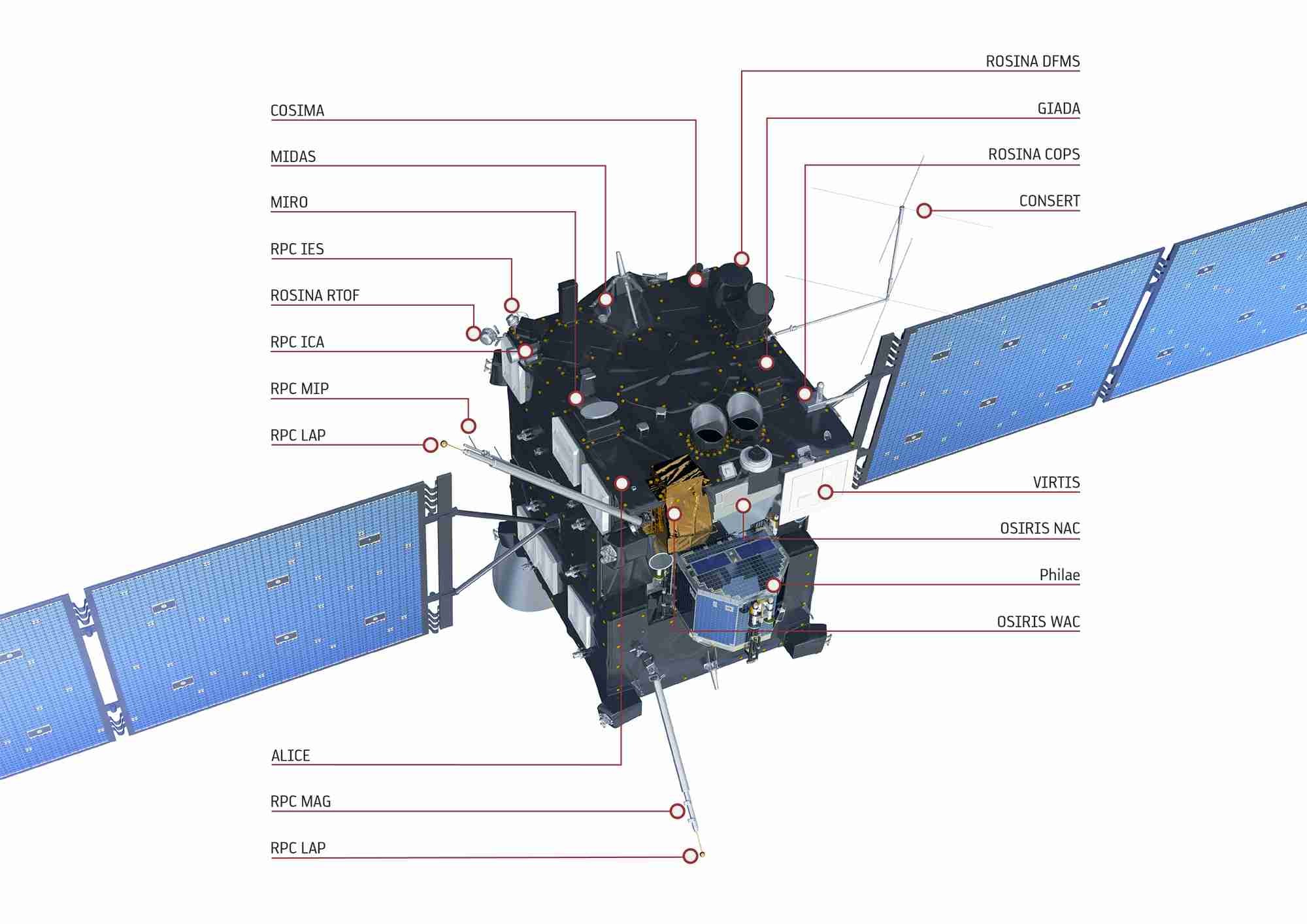The OSIRIS camera has two channels, one for wide field imaging (WAC) and the other for small field imaging at high resolution (NAC). It is this camera that allowed and still provides unforgettable images of the nucleus of the comet.
The spectrometers were designed to analyze the gas of the coma and the surface properties of the cometary nucleus. The ALICE ultraviolet spectrometer is well placed to study the atoms, radicals and ions produced by photo-dissociation of the parent molecules expelled from the nucleus, because their characteristic emissions are in this spectral range. The infrared imaging spectrometer VIRTIS has two channels: VIRTIS-M measures the temperature and the chemical composition of different parts of the surface, while the VIRTIS-H channel, with a better wavelength resolution but a lower spatial resolution, analyzes the spectrum emitted through fluorescence by the parent molecules in the near infrared. A millimeter and submillimeter sounder, MIRO, was embarked for the first time on a solar system mission. Thanks to its high spectral resolution, it identifies with a high precision the spectral signatures of some particularly abundant molecules (water, carbon monoxide, ammonia and methanol); moreover, it is able to measure the surface temperature and its variations to a depth of a few centimeters.
The probe’s mass spectrometers analyze gases and particles near the orbiter. ROSINA is dedicated to the analysis of the coma gas while COSIMA analyses the cometary dust. In both cases, it is the chemical composition of the sample (gas or grain) that is measured. The MIDAS instrument collects cometary grains to analyze them under a microscope while GIADA counts the impacts on a small area to determine their number, mass and speed.
In addition, the Rosetta Plasma Consortium ensemble consists of five instruments for analyzing the ionized environment of the comet and its interaction with the solar wind.
Finally the instrument CONSERT (Comet Nucleus Sounding Experiment by Radiowave Transmission), a first for a space mission, is particularly ambitious. This is a radio frequency sounder, placed on both Rosetta and the Philae lander, whose mission is the study of the internal structure of the comet nucleus. An antenna on the orbiter sends short pulses at a frequency of 90 MHz, through the nucleus. These are received by an antenna on Philae, which immediately returns a pulse detected by the orbiter. By measuring the round-trip time, and since the geometry of the system, and in particular the path length through the nucleus, are known through local telemetry and images supplied by the OSIRIS camera, one deduces the average refractive index of the material on the path. The intensity of the received signal gives a measure of the absorption of the waves on the same path. These steps are repeated for all possible positions of the orbiter around the core. By a tomographic analysis similar to that which is carried out on the human body with an X-ray scanner, the local density can thus be mapped in three dimensions as well as the absorption within the nucleus, and its heterogeneity is observed, which is essential for understanding of the comet formation.






